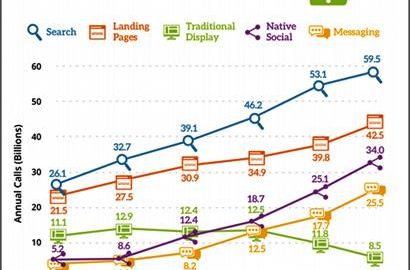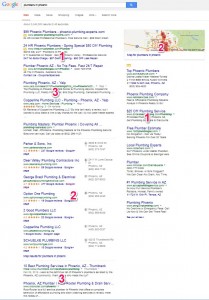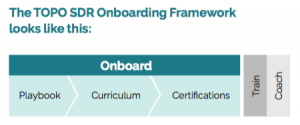Click-to-call commerce is influencing more than $1 trillion in U.S. consumer spending, according to a report released Wednesday.
The BIA/Kelsey report — Call Commerce: A $1 Trillion Economic Engine — examines mobile formats, how marketers take advantage of call commerce, and best practices to drive and track the activity.
BIA/Kelsey projects 169 billion mobile calls to businesses by 2020, driven by individuals on smartphones, high commercial intent, and the natural handoff between mobile engagement and phone calls, such as the ability to click to call a business from a Google advertisement or within an email.
BIA/Kelsey estimates global click-to-call spending at $5.9 billion in 2016, reaching $13.7 billion by 2020. The study also suggests that mobile calls represent 60% of inbound calls to businesses in 2016, about 85 billion global mobile calls annually, reaching to 169 billion by 2020.
The calls are boosted by what BIA/Kelsey dubs the on-demand culture, with the rise of the smartphone conditioning individuals to expect everything at the push of a button. Location also provides fodder for the movement. Location greatly increases contextual relevance as well as performance and engagement.
Inbound calls are important to generate leads. Mobile calls will account for 85 billion annually in 2016, according to BIA/Kelsey, and Google estimates that 69% of search users report they are likely to use a call button to contact a local business within mobile search results.
Search drives the most calls, but other formats are emerging such as native advertising and social media. More advertisers are beginning to use click-to-call in mobile ad units, and analytics further unlocks the potential and value through contextual awareness.
The need to talk with a live person persists, but on-demand and smartphones now give it greater urgency. In a Google study, 59% said getting a quick answer is the No. 1 reason for calling a business from a search. Some 57% want to talk with a live person, and 54% have additional questions to ask the Web site cannot answer.
The free report — made available courtesy of Marchex — also wants CMOs to realize that call commerce is evolving beyond marketing. While it began in large-scale deployment in call centers and integration with CRM systems, CMOs can apply call commerce to operational efficiencies including sales rep training, script optimization and call center close rates.
(84)
Report Post









